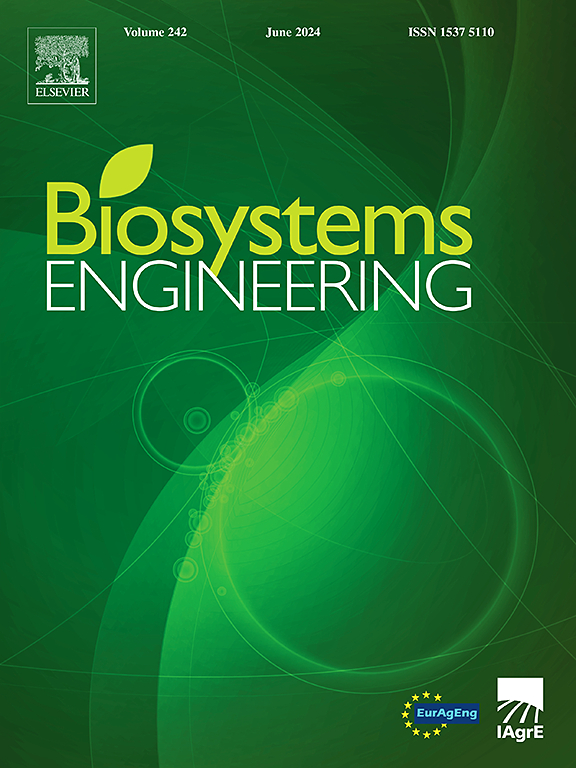Hydrodynamic flow conditions and calcium carbonate scale in dripper labyrinth with varied geometric configurations
IF 5.3
1区 农林科学
Q1 AGRICULTURAL ENGINEERING
引用次数: 0
Abstract
Clogging of drippers by calcium carbonate (CaCO3) scale is a major limitation to drip irrigation when calcareous water is used. This study investigates how hydrodynamic conditions and labyrinth geometry influence CaCO3 nucleation, deposition, and scaling patterns in drippers. Fifteen dripper prototypes with different geometries were evaluated, grouped as Type I (with well-developed vortices) and Type II (with more uniform flow). Tests were performed using water with different saturation levels (LSI = 1.3 and 1.7) in a closed hydraulic circuit. Discharge variation rate (Dra) and internal images of the labyrinths were used to assess clogging. Computational Fluid Dynamics (CFD) simulations provided velocity, shear rate, and turbulent kinetic energy (TKE) fields. Type I prototypes exhibited greater resistance to clogging compared to Type II, with flow cross-sectional area and the tooth height/channel width ratio (H/W) being key geometric factors. Higher H/W ratios led to scaling patterns more closely aligned with low-velocity, low-shear, and low-TKE zones, especially in peripheral areas. This indicates that local flow structures strongly influence CaCO3 scaling. In Type I emitters, hydrodynamic forces contributed not only to deposition but also to crystal removal and breakage. Scanning electron microscopy further revealed that the more turbulent flow in Type I prototypes altered the morphology of CaCO3 deposits, supporting the hypothesis that hydrodynamic play a critical role in scale formation and emitter performance.
不同几何构型滴管迷宫的流体动力流动条件及碳酸钙结垢
当使用钙质水时,滴灌器被碳酸钙(CaCO3)水垢堵塞是滴灌的主要限制。本研究探讨了流体动力条件和迷宫几何形状如何影响CaCO3在滴管中的成核、沉积和结垢模式。对15种不同几何形状的滴管原型进行了评估,分为I型(旋涡发达)和II型(流动更均匀)。在封闭的液压回路中使用不同饱和度的水(LSI = 1.3和1.7)进行测试。使用流量变化率(Dra)和迷宫内部图像来评估堵塞。计算流体动力学(CFD)模拟提供了速度、剪切速率和湍流动能(TKE)场。与II型相比,I型原型具有更强的抗堵塞能力,流动截面积和齿高/通道宽度比(H/W)是关键的几何因素。较高的H/W比导致结垢模式更接近于低速、低剪切和低tke区域,特别是在外围区域。这表明局部流动结构强烈影响CaCO3结垢。在I型发射器中,水动力不仅有助于沉积,而且有助于晶体的去除和破碎。扫描电镜进一步显示,I型原型中更湍流的流动改变了CaCO3沉积物的形态,支持了水动力在结垢形成和发射器性能中起关键作用的假设。
本文章由计算机程序翻译,如有差异,请以英文原文为准。
求助全文
约1分钟内获得全文
求助全文
来源期刊

Biosystems Engineering
农林科学-农业工程
CiteScore
10.60
自引率
7.80%
发文量
239
审稿时长
53 days
期刊介绍:
Biosystems Engineering publishes research in engineering and the physical sciences that represent advances in understanding or modelling of the performance of biological systems for sustainable developments in land use and the environment, agriculture and amenity, bioproduction processes and the food chain. The subject matter of the journal reflects the wide range and interdisciplinary nature of research in engineering for biological systems.
 求助内容:
求助内容: 应助结果提醒方式:
应助结果提醒方式:


